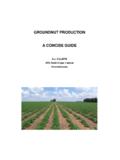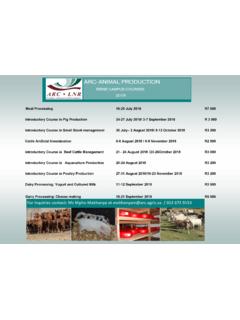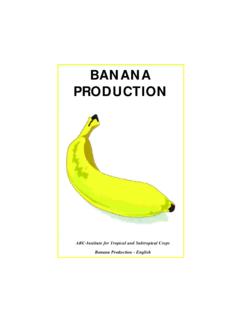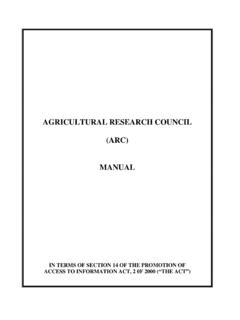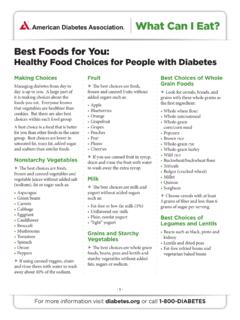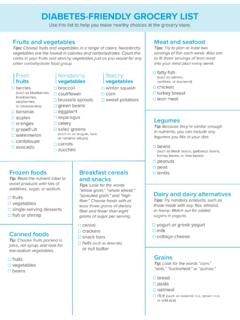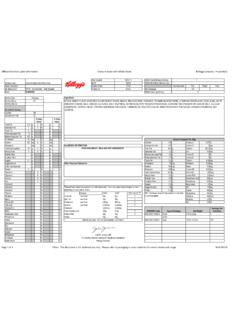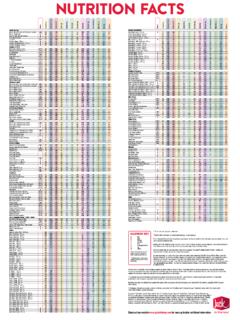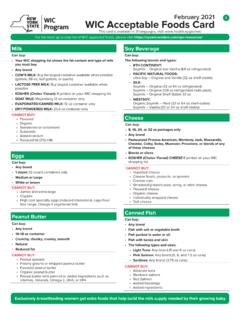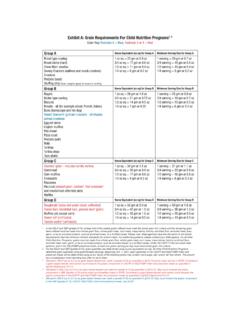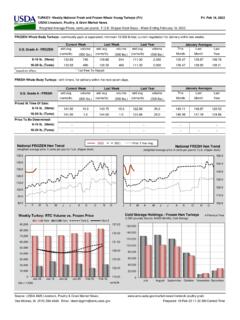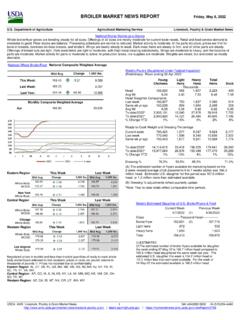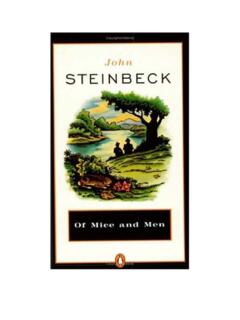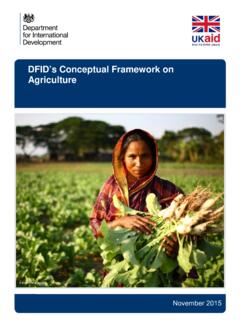Transcription of SORGHUM PRODUC Info Pak
1 1 SORGHUM PRODUCTION INTRODUCTION SORGHUM [ SORGHUM bicolour (L.) Moench] is an indigenous crop to Africa, and though commercial needs and uses may change over time, SORGHUM will remain a basic staple food for many rural communities. The latter is especially true in the more drought prone areas of South Africa where this hardy crop provides better household food security than maize. SORGHUM is mainly cultivated in drier areas, especially on shallow and heavy clay soils. The production of SORGHUM in South Africa varies from 100 000 tonnes (130 00 ha) to 180 000 tonnes (150 000 ha) per annum.
2 The Free State and Mpumalanga provinces are the largest contributors to the area planted to SORGHUM and SORGHUM production. In recent years, there has been a shift in SORGHUM production from the drier western production areas to the wetter eastern areas. This change in production area has resulted in the identification and development of cultivars, which are more tolerant to lower temperatures. MORPHOLOGY, GROWTH AND DEVELOPMENT SORGHUM belongs to the grass family, Graminea. It is essential that producers know the crop they are cultivating in order to develop the most effective production practices (Fig.)
3 1). Fig. 1. Botanical parts of a SORGHUM plant (After: MURDY, , TABO, R & AJAYI, O. 1994. SORGHUM Hybrid Seed Production and Management) 2 Root system Roots of the SORGHUM plant can be divided into a primary and secondary root system. The primary roots are those, which appear first from the germinating seed. The primary roots provide the seedling with water and nutrients from the soil. Primary roots have a limited growth and their functions are soon taken over by the secondary roots. Secondary roots develop from nodes below the soil surface.
4 The permanent root system branches freely, both laterally and downwards into the soil. If no soil impediments occur, roots can reach a lateral distribution of one meter and a depth of up to two meters early in the life of the plant. The roots are finer and branch approximately twice as much as roots from maize plants. Leaves SORGHUM leaves are typically green, glasslike and flat, and not as broad as maize leaves. SORGHUM plants have a leaf area smaller than that of maize. The leaf blade is long, narrow and pointed.
5 The leaf blades of young leaves are upright but the blades tend to bend downwards as leaves mature. Stomata occur on both surfaces of the leaf. An unique characteristic of SORGHUM leaves is the rows of motor cells along the midrib on the upper surface of the leaf. These cells can roll up leaves rapidly during moisture stress. Leaves are covered by a thin wax layer and develop opposite one another on either side of the stem. Environmental conditions determine the number of leaves, which may vary from eight to 22 leaves per plant.
6 Stem The stem of the plant is solid and dry, to succulent and sweet. Under favourable conditions more internodes develop, together with leaves, producing a longer stem. The stem consists of internodes and nodes. A cross section of the stem appears oval or round. The diameter of the stem varies between 5 mm and 30 mm. The internodes are covered by a thick waxy layer giving it a blue-white colour. The waxy layer reduces transpiration and increases the drought tolerance of the plants. The root band of nodes below or just above the soil surface develops prop roots.
7 The growth bud develops lateral shoots. Sometimes the growth buds higher up the stem may also develop lateral shoots. Inflorescence (Panicle) The inflorescence of SORGHUM is a compact panicle. The shape and colour of the panicle varies between cultivars. Heads are carried on a main stem or peduncle with primary and secondary branches on which the florets are borne. The peduncle is usually straight and its length varies from 75 to 500 mm. Each panicle contains from 800 to 3 000 kernels which are usually partly enclosed by glumes.
8 The colour of the glumes may be black, red, brown or tan. 3 The flowers of SORGHUM open during the night or early morning. Those at the top of the panicle open first and it takes approximately six to nine days for the whole panicle to flower. Due to the structure of the flower, mainly self-pollination takes place. A small percentage of cross-pollination (approximately 6 %) occurs naturally (Fig. 2). Fig. 2. Botanical parts of the inflorescence of a SORGHUM plant. (After: MURDY, , TABO, R & AJAYI, O. 1994.)
9 SORGHUM Hybrid Seed Production and Management) Seed The ripe seed ( grain ) of SORGHUM is usually partially enclosed by glumes, which are removed during threshing and/or harvesting. The shape of the seed is oval to round and the colour may be red, white, yellow, brown or shades thereof. If only the pericarp is coloured, the seed is usually yellow or red. Pigment in both the pericarp and testa results is a dark-brown or red-brown colour. The SORGHUM grain consists of the testa, embryo and endosperm. Table 1.
10 Composition of the SORGHUM grain as a fraction of total mass Description Percentage (%) Seed coat Embryo Endosperm Seed coat The seed coat consists of the pericarp and testa. 4 Pericarp This is the outermost layer of the seed and consists of the epicarp, hypodermis, mesocarp and endocarp. Testa The testa is situated directly below the endocarp and encloses the endosperm. Apart from the role of the testa in the colouring of the seed, it contains a tannin-like substance with a bitter taste. The presence thereof results is less bird damage to SORGHUM .
